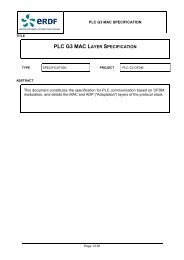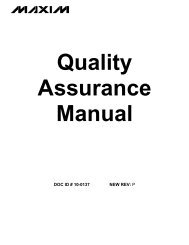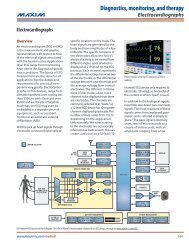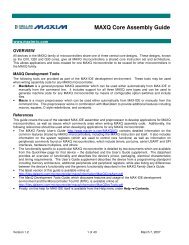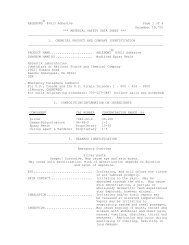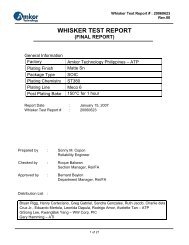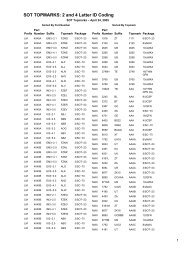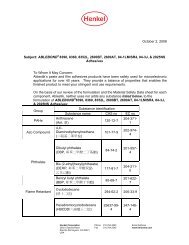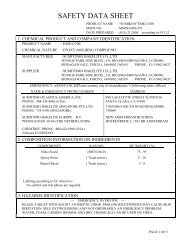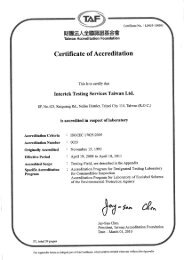Smart Grid Solutions Guide - Maxim
Smart Grid Solutions Guide - Maxim
Smart Grid Solutions Guide - Maxim
Create successful ePaper yourself
Turn your PDF publications into a flip-book with our unique Google optimized e-Paper software.
Energy measurementOverviewEnergy measurementOverviewEnergy demand around the worldis predicted to increase at a ratethat will likely outstrip our abilityto generate it. Estimates by the U.S.Department of Energy forecast totalenergy consumption in the U.S. toincrease by 30% to over 5,000 billionkWh in 2035, while new plannedgeneration (including renewablesources) is expected to grow only22% during this period. Increasedenergy efficiency and improvedenergy management are critical toaverting this potential energy crisis.Traditional open-loop strategies formanaging power usage are crudeand inefficient, resulting in lowerreliability and reduced distributionstability. Engineers are workingto improve power efficiency in allelectronic applications—commercialequipment, home appliances,industrial motors, and networkequipment. Increasing efficiency,however, is only part of the equation.Better energy management and,consequently, comprehensivemeasurement systems are essential.Incorporating feedback abouthow power is consumed yields thebenefits of a closed-loop system andreduces waste. Additionally, givingenergy users greater visibility intotheir power consumption can helpovercome consumer indifference toenergy concerns.Accurate measurement provides thefeedback necessary to understand,confirm, and modify our powerconsumption. It is critical to implementingan energy-managementcontrol loop and providing insight formaintenance and failure diagnostics.This chapter addresses two keyareas that benefit from new energymeasurementtechnologies: residential/commercial point of loads (POLs) anddata centers.Measuring point-of–loadefficiencyIntelligent power-managementschemes require accurate energymeasurement, not only at anaggregate level (e.g., an entirebuilding) but also at the POL (e.g.,air conditioner, lighting, dishwasher,or computer).<strong>Smart</strong> meters can track time-of-daypower consumption and enableutilities to offer incentives toconsumers to change their usagepatterns. To improve automationwe need to equip consumers withchoices and enhanced services.Individual POLs must be tied to alocal data and control network thatmonitors and allows control of thevarious loads within a buildingor household. Services can beenhanced through power-qualitymeasurements and usage statistics,which can be used to schedulemaintenance. Such a network canbe implemented using a wide varietyof configurations and protocols,depending upon the application.A local data and control network thatincludes accurate power measurementcan enable significant costsavings by identifying how power isbeing used. Consumers who can seethat running the air conditioner costs$200/month (value of use) or quantifythe cost difference between runningthe dryer at noon instead of 7 p.m.(time-value of use) are more likely tochange their usage patterns.Data that used to be acquired byexpensive high-end utility meters isnow available for an order-of-magnitudeless cost. Power factor (PF),harmonic distortion, active power(watts), and apparent power (VA)information can be readily availablefor optimizing power-delivery501.00501.004545WATTS (GREEN) AND VA (BLUE)403530252015100.750.500.25POWER FACTOR (RED LINE)WATTS (GREEN) AND VA (BLUE)403530252015100.750.500.25POWER FACTOR (RED LINE)550SECONDS00SECONDS0Figure 1. The power profile of a laptop computer during power-up, steady-state, and power-down using two different plug-in power supplies.www.maxim-ic.com/smartgrid 41




